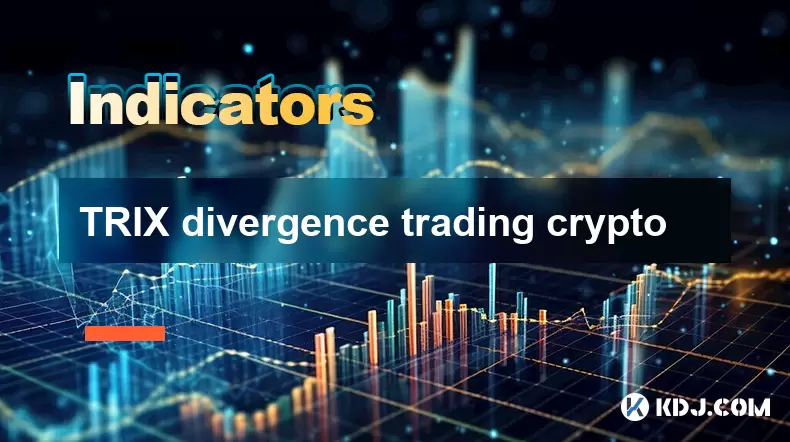-
 Bitcoin
Bitcoin $120400
1.77% -
 Ethereum
Ethereum $3615
7.90% -
 XRP
XRP $3.580
17.84% -
 Tether USDt
Tether USDt $1.001
0.06% -
 BNB
BNB $729.4
1.25% -
 Solana
Solana $179.9
5.04% -
 USDC
USDC $0.0000
0.01% -
 Dogecoin
Dogecoin $0.2311
8.22% -
 TRON
TRON $0.3226
4.04% -
 Cardano
Cardano $0.8490
12.85% -
 Hyperliquid
Hyperliquid $46.45
0.72% -
 Stellar
Stellar $0.4913
8.54% -
 Sui
Sui $4.027
2.00% -
 Chainlink
Chainlink $18.51
11.67% -
 Hedera
Hedera $0.2818
21.51% -
 Avalanche
Avalanche $24.03
7.40% -
 Bitcoin Cash
Bitcoin Cash $508.5
2.90% -
 Shiba Inu
Shiba Inu $0.00001496
3.24% -
 UNUS SED LEO
UNUS SED LEO $8.961
1.83% -
 Toncoin
Toncoin $3.264
3.13% -
 Litecoin
Litecoin $104.6
8.15% -
 Polkadot
Polkadot $4.389
6.11% -
 Uniswap
Uniswap $9.924
10.63% -
 Monero
Monero $337.9
0.49% -
 Pepe
Pepe $0.00001376
2.79% -
 Bitget Token
Bitget Token $4.830
2.46% -
 Ethena USDe
Ethena USDe $1.001
0.05% -
 Dai
Dai $1.000
0.02% -
 Aave
Aave $325.2
1.66% -
 Bittensor
Bittensor $423.7
-0.85%
TRIX divergence trading crypto
TRIX divergence helps crypto traders spot potential price reversals by comparing momentum shifts between price action and the TRIX indicator, offering strategic entry and exit points when combined with other technical tools.
Jul 15, 2025 at 08:42 pm

Understanding TRIX Divergence in Crypto Trading
TRIX divergence is a powerful technical analysis tool that helps traders identify potential reversals in cryptocurrency price movements. TRIX (Triple Exponential Average) measures the rate of change of a triple exponentially smoothed moving average. When used in divergence trading, it becomes a crucial indicator for predicting trend exhaustion and upcoming price direction changes.
Divergence occurs when the price of a cryptocurrency makes a new high or low, but the TRIX indicator does not confirm this move. This discrepancy often signals weakening momentum and can precede a reversal. Understanding how to interpret TRIX divergence accurately is essential for crypto traders who want to time entries and exits more effectively.
Types of TRIX Divergence: Bullish vs Bearish
There are two main types of TRIX divergence: bullish and bearish.
- Bullish divergence appears when the price records a lower low, but the TRIX line forms a higher low. This suggests that despite falling prices, momentum is beginning to shift upwards.
- Bearish divergence occurs when the price reaches a higher high, but the TRIX line prints a lower high. This indicates weakening upward momentum and hints at a possible downturn.
Recognizing these patterns early can help traders position themselves ahead of market shifts. For example, during a strong uptrend in Bitcoin or Ethereum, if the TRIX fails to make a new high while the price does, it might be an early sign of overextension.
How to Set Up TRIX on Your Trading Platform
To begin using TRIX divergence trading strategies, you need to set up the TRIX indicator correctly on your preferred charting platform such as TradingView, Binance, or MetaTrader.
Here's how to add TRIX:
- Open your preferred trading platform and select a crypto pair (e.g., BTC/USDT).
- Locate the indicators section and search for "TRIX".
- Add the indicator to the chart.
- Adjust the default settings if necessary (typically 14 periods is standard).
- Enable histogram or signal line options for better visualization.
Once applied, observe how the TRIX line reacts to price action. It oscillates above and below a zero line, providing both momentum and divergence signals. The histogram version can make it easier to spot divergences visually.
Spotting Divergence Patterns on Crypto Charts
Identifying TRIX divergence involves comparing price highs/lows with corresponding TRIX highs/lows. Here’s how to do it step by step:
- Look for recent swing highs or lows on the price chart.
- Check the corresponding peaks or troughs on the TRIX indicator.
- If the price makes a higher high but TRIX makes a lower high, that’s a bearish divergence.
- Conversely, if the price makes a lower low but TRIX makes a higher low, that’s a bullish divergence.
This method works best when combined with other tools like support/resistance levels or volume indicators. For instance, spotting a TRIX bearish divergence near a key resistance zone increases the probability of a successful trade.
It's also important to use candlestick confirmation before acting on a divergence signal. A bearish engulfing pattern following a bearish divergence can provide stronger confirmation than the divergence alone.
Executing Trades Based on TRIX Divergence Signals
Once a valid TRIX divergence has been identified, the next step is to execute a trade. Here's how experienced crypto traders approach this:
- Wait for price confirmation before entering a trade.
- Place stop-loss orders just beyond the most recent swing point to manage risk.
- Consider taking partial profits at key Fibonacci retracement levels.
- Use trailing stops to protect gains if the trend continues.
For example, if a bullish divergence appears on the Ethereum 4-hour chart, a trader might enter a long position after a bullish candlestick closes above a key moving average. They would place a stop loss below the most recent low and monitor the TRIX for signs of momentum fading.
Timing entry based solely on divergence can be risky, so many traders wait for a retest of a trendline or support level before committing capital.
Common Mistakes to Avoid in TRIX Divergence Trading
While TRIX divergence is a powerful concept, many traders make critical errors that reduce profitability:
- Ignoring the broader market context – Divergence can persist in strong trends without leading to a reversal.
- Overtrading weak divergence setups – Not every divergence leads to a meaningful price move.
- Failing to combine with other confirming indicators – Relying solely on divergence can lead to false signals.
- Not adjusting for volatility – In highly volatile crypto markets, divergence signals may appear frequently but lack reliability.
Avoiding these pitfalls requires discipline and a well-defined trading plan. Traders should backtest their TRIX divergence strategy across multiple crypto assets and timeframes to understand its effectiveness under different conditions.
Frequently Asked Questions (FAQ)
Q: Can TRIX divergence be used for intraday crypto trading?
Yes, TRIX divergence can be effective for intraday trading, especially on 15-minute or 1-hour charts. However, due to increased noise and volatility in shorter timeframes, it’s advisable to combine it with volume analysis or order flow indicators for better accuracy.
Q: Is TRIX divergence reliable in ranging markets?
In sideways or consolidating markets, TRIX divergence may produce frequent but unreliable signals. It performs best in trending environments where momentum shifts are clearer. Using additional tools like Bollinger Bands or RSI can help filter out false divergences.
Q: How does TRIX compare to MACD divergence in crypto trading?
Both TRIX and MACD divergence aim to detect momentum shifts, but TRIX is smoother and less prone to whipsaws, making it potentially more suitable for volatile crypto markets. However, MACD offers more visual clarity through its histogram and signal line crossovers.
Q: Should I use TRIX divergence on all cryptocurrencies?
No, not all cryptocurrencies respond equally to TRIX divergence. Major coins like Bitcoin, Ethereum, and Binance Coin tend to exhibit clearer divergence patterns due to higher liquidity and institutional participation. Smaller altcoins may generate misleading signals due to erratic price behavior.
Disclaimer:info@kdj.com
The information provided is not trading advice. kdj.com does not assume any responsibility for any investments made based on the information provided in this article. Cryptocurrencies are highly volatile and it is highly recommended that you invest with caution after thorough research!
If you believe that the content used on this website infringes your copyright, please contact us immediately (info@kdj.com) and we will delete it promptly.
- Bitcoin Whale's $9.6B Galaxy Digital Move: Profit-Taking or Strategic Play?
- 2025-07-18 14:30:12
- Alchemy Pay, Crypto-Finance, and Hong Kong: A Budding Hub?
- 2025-07-18 14:30:12
- Dave Portnoy's XRP Regret: A Crypto Dump Disaster?
- 2025-07-18 15:10:12
- XRP Price Surges to 7-Year High: Expert Predictions and Market Analysis
- 2025-07-18 15:10:12
- Crypto Market Cap Nears $4T: Can It Rival the Biggest Companies?
- 2025-07-18 14:50:12
- Binners Alpha, TrutaAI, Andken ERA: A New Era?
- 2025-07-18 14:50:12
Related knowledge

Advanced RSI strategies for crypto
Jul 13,2025 at 11:01am
Understanding the Basics of RSI in Cryptocurrency TradingThe Relative Strength Index (RSI) is a momentum oscillator used to measure the speed and chan...

Crypto RSI for day trading
Jul 12,2025 at 11:14am
Understanding RSI in the Context of Cryptocurrency TradingThe Relative Strength Index (RSI) is a momentum oscillator used to measure the speed and cha...

Crypto RSI for scalping
Jul 12,2025 at 11:00pm
Understanding RSI in the Context of Crypto TradingThe Relative Strength Index (RSI) is a momentum oscillator widely used by traders to measure the spe...

What does an RSI of 30 mean in crypto
Jul 15,2025 at 07:07pm
Understanding RSI in Cryptocurrency TradingRelative Strength Index (RSI) is a momentum oscillator widely used in cryptocurrency trading to measure the...

What does an RSI of 70 mean in crypto
Jul 13,2025 at 06:07pm
Understanding the RSI Indicator in Cryptocurrency TradingThe Relative Strength Index (RSI) is a widely used technical analysis tool that helps traders...

Does RSI work in a bear market for crypto
Jul 16,2025 at 01:36pm
Understanding RSI in Cryptocurrency TradingThe Relative Strength Index (RSI) is a momentum oscillator used by traders to measure the speed and change ...

Advanced RSI strategies for crypto
Jul 13,2025 at 11:01am
Understanding the Basics of RSI in Cryptocurrency TradingThe Relative Strength Index (RSI) is a momentum oscillator used to measure the speed and chan...

Crypto RSI for day trading
Jul 12,2025 at 11:14am
Understanding RSI in the Context of Cryptocurrency TradingThe Relative Strength Index (RSI) is a momentum oscillator used to measure the speed and cha...

Crypto RSI for scalping
Jul 12,2025 at 11:00pm
Understanding RSI in the Context of Crypto TradingThe Relative Strength Index (RSI) is a momentum oscillator widely used by traders to measure the spe...

What does an RSI of 30 mean in crypto
Jul 15,2025 at 07:07pm
Understanding RSI in Cryptocurrency TradingRelative Strength Index (RSI) is a momentum oscillator widely used in cryptocurrency trading to measure the...

What does an RSI of 70 mean in crypto
Jul 13,2025 at 06:07pm
Understanding the RSI Indicator in Cryptocurrency TradingThe Relative Strength Index (RSI) is a widely used technical analysis tool that helps traders...

Does RSI work in a bear market for crypto
Jul 16,2025 at 01:36pm
Understanding RSI in Cryptocurrency TradingThe Relative Strength Index (RSI) is a momentum oscillator used by traders to measure the speed and change ...
See all articles

























































































